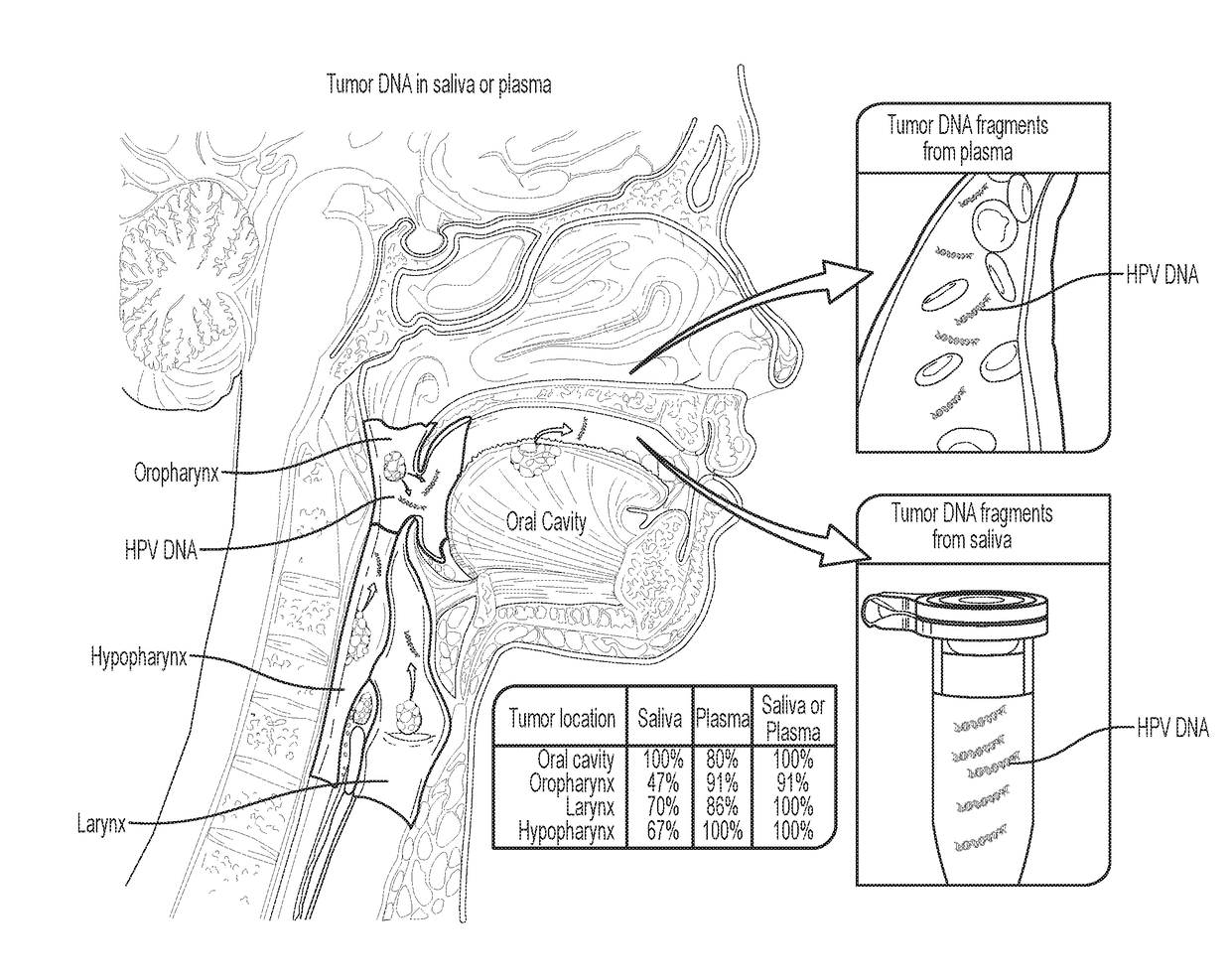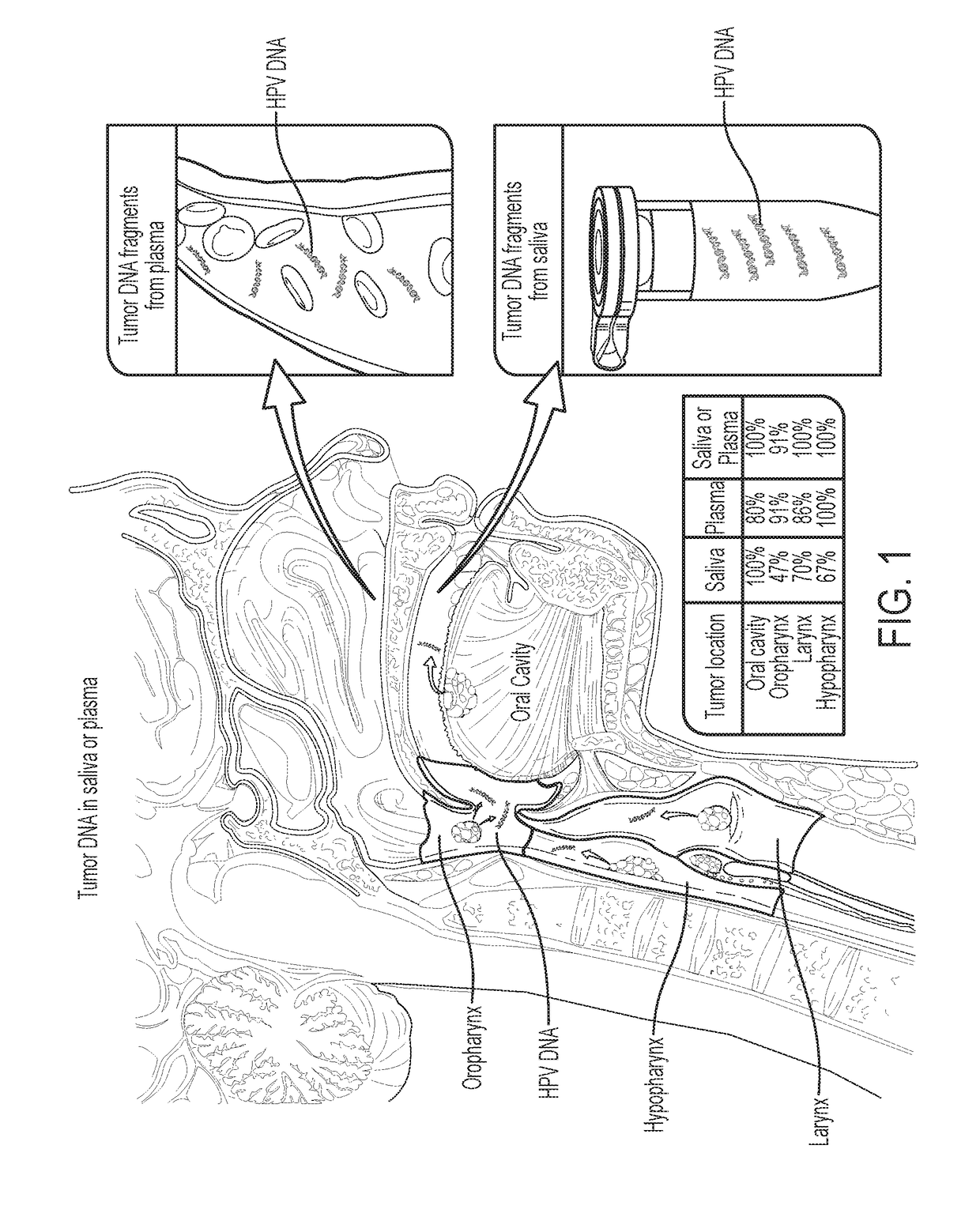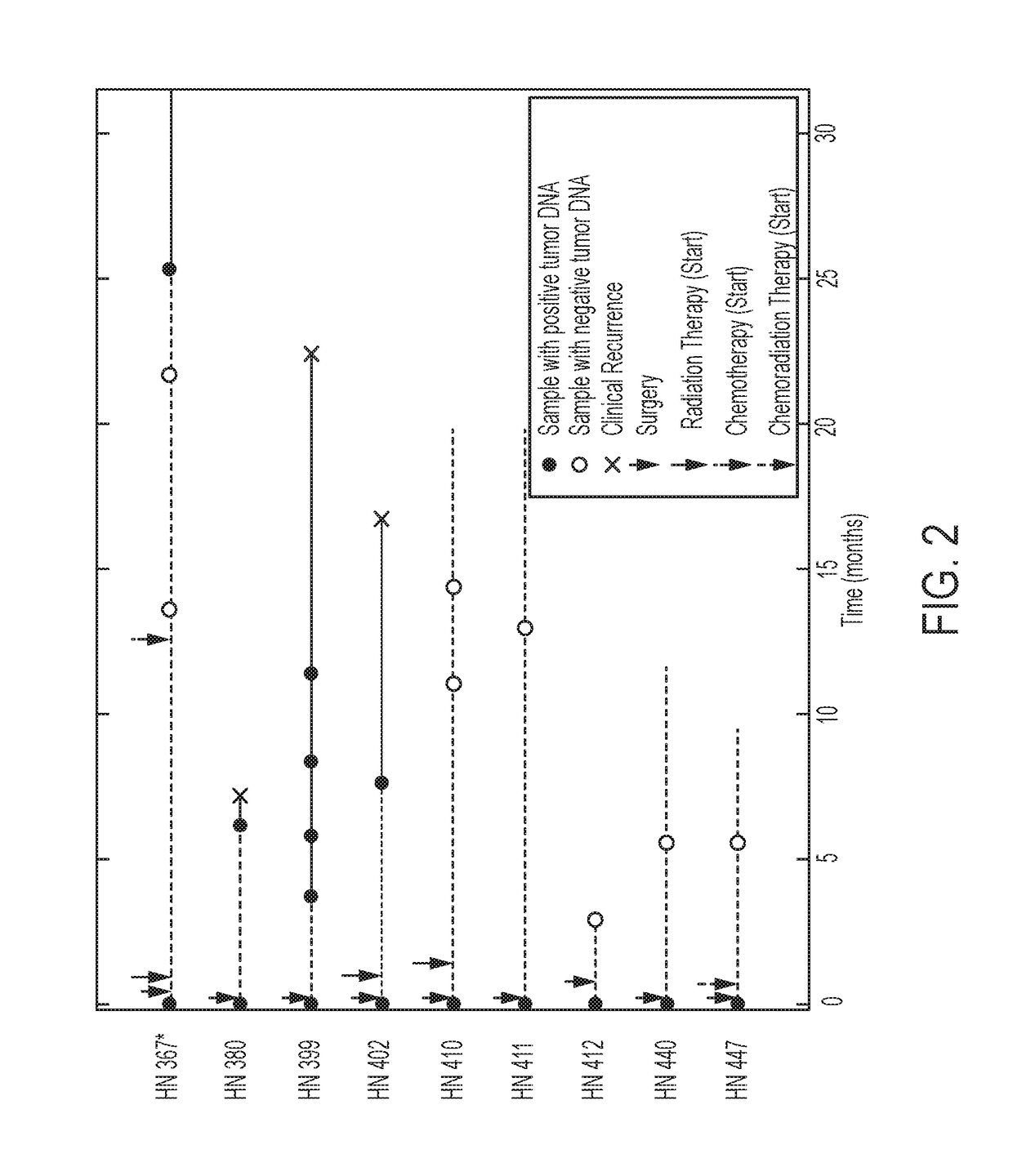Head and neck squamous cell carcinoma assays
a squamous cell carcinoma and assay technology, applied in the field of cancer, can solve the problems of limiting progress in mitigating the impact of this often morbid and potentially lethal disease on human health, and the concentration of mutant templates is often low in bodily fluids
- Summary
- Abstract
- Description
- Claims
- Application Information
AI Technical Summary
Benefits of technology
Problems solved by technology
Method used
Image
Examples
example 1
Materials and Methods
Study Design
[0028]This was a retrospective study with sample collection performed prospectively from 93 HNSCC patients donating saliva, 47 of whom also donating plasma. Data analysis was performed in a blinded fashion and all patient samples were de-identified.
Samples
[0029]All samples from the 93 patients in this study were collected using Institutional Review Board (IRB) approved protocols at Johns Hopkins University and MD Anderson Medical Center. None of the patients in the current study were included in the previously published study from our groups, in which the genomic landscapes of HNSCC were described (9). Saliva samples were collected before definitive treatment for primary HNSCC (n=71, 76% of 93 patients) and before salvage treatment for recurrent HNSCC (n=22, 24% of 93 patients). In a subset of these patients (n=9), post-treatment saliva was also collected for surveillance. Most patients (95% of the 93) underwent a biopsy of the primary tumor and / or m...
example 2
[0036]Mutations in Primary Tumors
[0037]Ninety-three patients with HNSCC were enrolled in this study. Their average age was 60 and the majority (83%) were male, as is typical of HNSCC patients (FIG. 4). Forty-six, 34, 10, and 3 samples were from the oral cavity, oropharynx, larynx, and hypopharynx, respectively. Twenty patients (22%) had early (Stage I or II) disease and the remaining 73 patients (78%) had advanced (Stage III or IV) disease.
[0038]To begin this study, we attempted to identify at least one genetic alteration in each tumor. We first searched for the presence of either HPV16 or HPV18 sequences in tumor DNA. HPV is a well-established etiologic agent for a growing subset of HNSCCs, specifically oropharyngeal SCC (6, 15). With PCR primer pairs specific for the E7 gene of the high-risk HPV types responsible for the overwhelming majority of HPV-associated HNSCC, we identified 30 patients (32%) whose tumors contained HPV16 DNA and no patients with HPV18. The preponderance of H...
example 3
Mutations in Saliva and Plasma
[0039]Important characteristics of screening tests are that samples can be easily collected without discomfort and that the collection process is standardized. To achieve these goals, we used oral rinses, plasma, and commercially available kits to prepare DNA for conventional genotyping purposes. For saliva, we used the entire contents of the collection tube (including cells and cell debris) to prepare DNA. Of the 93 patients who donated saliva for this study prior to their surgery, 47 patients (51%) volunteered to donate plasma at the same time. DNA from plasma was purified as previously described (23). Digital PCR was used to query HPV sequences and translocations (36), whereas point mutations were assessed by Safe SeqS, a PCR-based technology for the detection of low-frequency mutations, as previously described (23, 25, 34-36).
[0040]Tumor DNA was identified in 76% (n=93) and 87% (n=47) of the saliva and plasma samples from these patients, respectivel...
PUM
| Property | Measurement | Unit |
|---|---|---|
| time | aaaaa | aaaaa |
| concentration | aaaaa | aaaaa |
| frequency | aaaaa | aaaaa |
Abstract
Description
Claims
Application Information
 Login to View More
Login to View More - R&D
- Intellectual Property
- Life Sciences
- Materials
- Tech Scout
- Unparalleled Data Quality
- Higher Quality Content
- 60% Fewer Hallucinations
Browse by: Latest US Patents, China's latest patents, Technical Efficacy Thesaurus, Application Domain, Technology Topic, Popular Technical Reports.
© 2025 PatSnap. All rights reserved.Legal|Privacy policy|Modern Slavery Act Transparency Statement|Sitemap|About US| Contact US: help@patsnap.com



